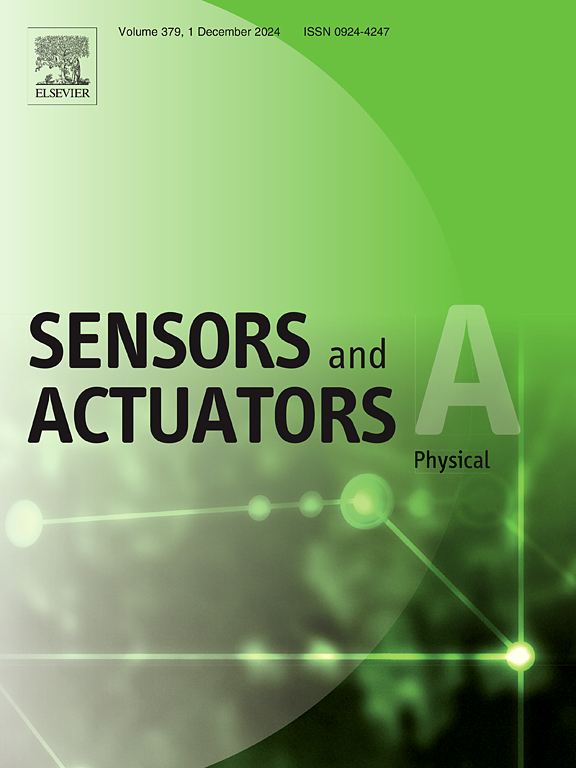Micro-droplet ejection based on controllable cavity collapse within confined interface
IF 4.1
3区 工程技术
Q2 ENGINEERING, ELECTRICAL & ELECTRONIC
引用次数: 0
Abstract
Micro-drop ejection technology has been widely employed in cell analysis, drug delivery, microreactors, and various other fields due to its high accuracy and resolution, which can accurately control and dispense liquid materials. However, the current development of this technology faces challenges due to nozzle diameter limitations. Smaller droplets require finer nozzles for ejection. Nevertheless, fine nozzles cause significant fluid resistance, hindering micro-droplet ejection. Overcoming the constraint posed by nozzle and achieving high-precision micro-droplets ejection has become a challenging task for the industry. Inspired by the phenomenon of cavity collapse in nature, we have developed a micro-droplet ejection technology based on actively controlling the cavity collapse within the confined interface. By analyzing the formation and collapse of the liquid cavity, we have identified three ejection modes: no droplet, single droplet, and satellite droplet, and further delineated the boundary conditions for minimizing droplet size and ejecting satellite-free droplets. Using this technology, we achieved precise control over droplet size within a defined range, with the minimum droplet diameter reaching 34 % of the nozzle diameter. Furthermore, the continuous ejection of single droplets demonstrated excellent stability and repeatability. This innovative technology could provide a novel approach to achieve high accuracy and controllability in micro-droplets ejection, liberating it from nozzle constraints, thus expected to play a significant role in the fields of biomedical research, chemical engineering, and printed electronics.
基于受限界面内可控空腔坍塌的微滴喷射
微滴喷射技术因其高精度和高分辨率,可精确控制和喷射液体材料,已被广泛应用于细胞分析、药物输送、微反应器等多个领域。然而,由于喷嘴直径的限制,该技术目前的发展面临挑战。较小的液滴需要更细的喷嘴来喷射。然而,细喷嘴会产生很大的流体阻力,阻碍微液滴的喷射。克服喷嘴的限制,实现高精度微液滴喷射已成为业界的一项挑战性任务。受自然界空腔坍塌现象的启发,我们开发了一种基于主动控制密闭界面内空腔坍塌的微液滴喷射技术。通过分析液腔的形成和坍塌,我们确定了三种喷射模式:无液滴、单液滴和卫星液滴,并进一步划分了最小化液滴尺寸和喷射无卫星液滴的边界条件。利用这项技术,我们实现了在规定范围内对液滴大小的精确控制,最小液滴直径达到喷嘴直径的 34%。此外,单个液滴的连续喷射表现出了极佳的稳定性和可重复性。这项创新技术为实现微液滴喷射的高精度和可控性提供了一种新方法,使其摆脱了喷嘴的限制,因此有望在生物医学研究、化学工程和印刷电子学领域发挥重要作用。
本文章由计算机程序翻译,如有差异,请以英文原文为准。
求助全文
约1分钟内获得全文
求助全文
来源期刊

Sensors and Actuators A-physical
工程技术-工程:电子与电气
CiteScore
8.10
自引率
6.50%
发文量
630
审稿时长
49 days
期刊介绍:
Sensors and Actuators A: Physical brings together multidisciplinary interests in one journal entirely devoted to disseminating information on all aspects of research and development of solid-state devices for transducing physical signals. Sensors and Actuators A: Physical regularly publishes original papers, letters to the Editors and from time to time invited review articles within the following device areas:
• Fundamentals and Physics, such as: classification of effects, physical effects, measurement theory, modelling of sensors, measurement standards, measurement errors, units and constants, time and frequency measurement. Modeling papers should bring new modeling techniques to the field and be supported by experimental results.
• Materials and their Processing, such as: piezoelectric materials, polymers, metal oxides, III-V and II-VI semiconductors, thick and thin films, optical glass fibres, amorphous, polycrystalline and monocrystalline silicon.
• Optoelectronic sensors, such as: photovoltaic diodes, photoconductors, photodiodes, phototransistors, positron-sensitive photodetectors, optoisolators, photodiode arrays, charge-coupled devices, light-emitting diodes, injection lasers and liquid-crystal displays.
• Mechanical sensors, such as: metallic, thin-film and semiconductor strain gauges, diffused silicon pressure sensors, silicon accelerometers, solid-state displacement transducers, piezo junction devices, piezoelectric field-effect transducers (PiFETs), tunnel-diode strain sensors, surface acoustic wave devices, silicon micromechanical switches, solid-state flow meters and electronic flow controllers.
Etc...
 求助内容:
求助内容: 应助结果提醒方式:
应助结果提醒方式:


